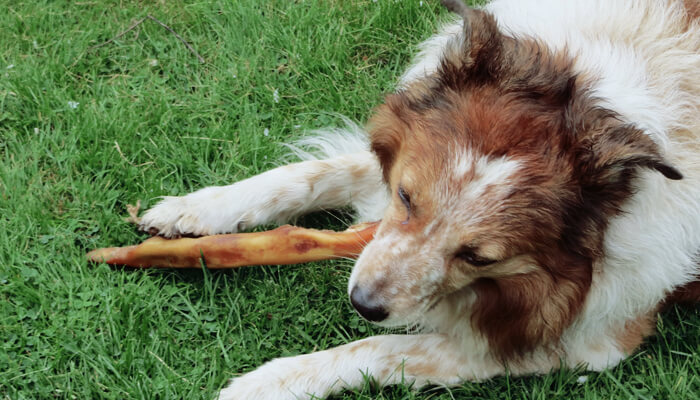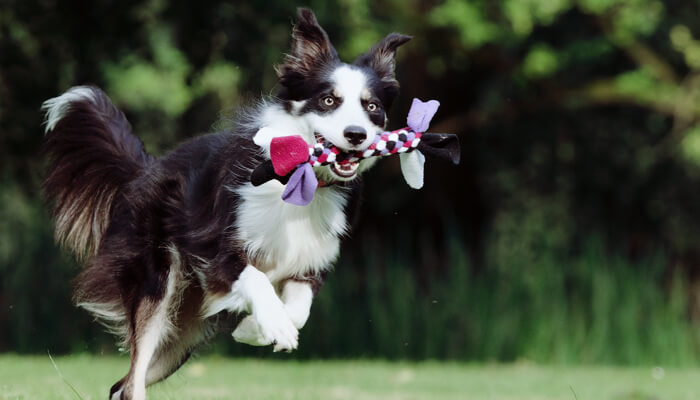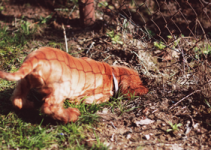If you have an emaciated dog, it is vital that you go about helping them regain weight in a safe and healthy manner. It can be far too easy to go from one extreme to another (e.g. obesity). To assist you in the matter, we came up with eight tips on how to put weight on a malnourished dog so they can get stronger and heartier. It is not completely mandatory that you follow them in this precise order, they are just simply separated by how you can investigate the weight loss to the actual feeding to help gain back the weight.
8. Determine What is Causing Weight Loss
Before you jump to taking any drastic measures, it is helpful to learn what exactly is causing your dog to lose weight to the point that they are malnourished. For those of you that have more than one dog, the answer can be simple: their food is being stolen. This is a common thing that occurs in households with more than one pet. Discovering a cause such as this can lead to a quicker, easier fix that involves training the other pet(s) to eat out of their bowl only, or even separating the dogs.
Sometimes, a dog that has just given birth can look malnourished as well. This is another common thing that can have a different treatment. Getting her critical nutrition is a must so that she can produce adequate milk. Of course, if you find that your dog is not undergoing the situations above, then you must take additional steps.
7. Track Your Dog’s Weight
It may not seem like it at first, but a good step in learning how to put weight on a malnourished dog is keeping track of their weight in the first place. The moment you have discovered your dog is losing weight, you need to start recording it.
This is not only a good way to learn what may be causing the weight loss, but it’s also a good way to monitor the eventual weight gain. It will help you learn whether or not your dog is putting on weight in a healthy fashion. This also prevents them from gaining too much too fast.
6. Check Their Food Packaging
Perhaps one of the reasons your dog is malnourished is that they just are not getting the proper nutrients and calories in the food you feed them. A dog can also be losing more calories than they are getting in, and if this happens long enough, it may lead to them becoming malnourished.
This step can be done by first finding out your dog’s ideal weight and then comparing it to the food amount that is suggested on your dog food package. You can search online to find out the ideal weight for your specific breed. Then you simply change your dog’s usual food portion accordingly.
5. Change the Feeding Schedule
If you have moved past the cause of your dog’s malnourished state, then it is time to adequately treat it by changing their diet. A good first step in changing the diet is by adjusting your feeding schedule. Similar to humans, dogs have a metabolism and a way of storing fat and nutrients that can change depending on the time of day.
To help your dog put on weight, you can adjust their usual schedule by feeding them smaller meals in the morning and during the day. Closer to evening and before their “bedtime”, you can feed a larger meal. This can help them store a little bit more fat at night rather than burning it off during the day. To help you with this, you can try out an automatic feeder that has portion control settings that you can change based on specific times.
4. Add Some More Protein
Although changing the schedule can be of great help, it is equally important that your dog is actually receiving the right kind of food. A good method on how to put weight on a malnourished dog is by utilizing more protein.
There are a few ways to go about this. For starters, you can just change your dry dog food to one that is high in protein. This can have other added benefits such as increasing nutrient absorption and building up the immune system, traits that are vital when treating a malnourished dog.
You can also go with actual meat that is high in protein rather than just dry dog food. Other than meat, you can try other foods like sweet potato. This can better serve your dog if it is first mixed in with their old food. By doing this, you reduce the likelihood of them getting ill because of such a drastic diet change.
3. Gradually Increase Food Amount
Perhaps what may be the most important step when you are learning how to put weight on a malnourished dog is going about it the right way. Meaning, it will not do your dog any good to start feeding them these large portions or more meals right away. Rather, it is vital that you begin this process in a gradual manner.
By going too much too fast, you can actually cause your dog to become sicker. An upset stomach can easily lead to diarrhea, which can then cause them to become even more malnourished as they’re losing all the food and nutrients they’re putting in.
Try dividing the meals more or starting out slow with smaller portions. Eventually, work your way up, and your dog will be able to actually retain the food you’re giving. This will lead to them gaining weight properly over time.
2. Exercise More
This may seem counterproductive when trying to learn how to put weight on a malnourished dog, but it can be highly beneficial. Just as important as having the right fat count on an emaciated dog, muscles can go a long way.
Your dog’s weight will always have a relation to their health overall. So, a good amount of exercise is important. Of course, this should be paired alongside the right kind of diet. Otherwise, it may wind up doing more harm than good. If you are unsure of how to properly balance this, you should always consult with your vet.
1. Visit A Veterinarian
If you have moved beyond searching for clues as to why your dog has dropped weight and you have also tried fixing their diet following the steps above but your dog still did not put weight on, then it is time to consult with your veterinarian. This is an important step because there could be a number of factors that contribute to your dog being malnourished that only a vet can check for.
For example, they could be fighting off an illness such as a parasite. If this is the case, then your vet can provide medication to begin treating the illness. Once this has been treated, then your vet can help you learn how to put weight on a malnourished dog without harming them further.
Conclusion
No one wants to see their dog emaciated, but if it ever happens, it’s important that you learn properly how to put weight on a malnourished dog. It is far too easy to want a quick fix, but that will only lead to your dog falling iller over time. By using the steps above, you can help your dog become healthier and gain weight the right way. If you have tried out our tips, let us know how it worked out for you and your dog. You can also check out our tips on how to tell if your dog is dehydrated.






